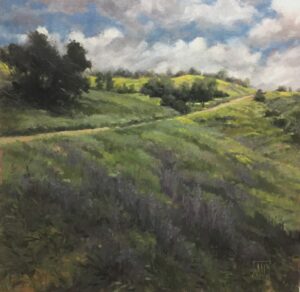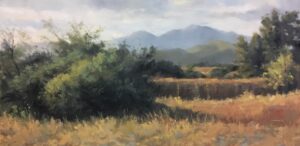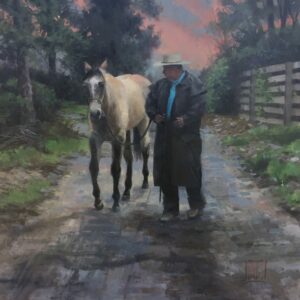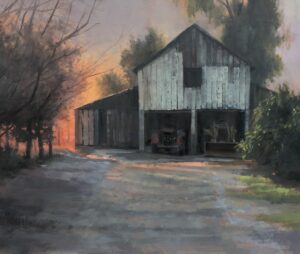
Shouldn’t it be the goal of painters to reveal themselves in their work? To be known because of their work? And by that I don’t mean to be famous, (like “Look at me! I’m so great and everyone knows it!”) as much as I mean to be understood – as in the idea that all paintings are a kind of self-portrait of the painter, revealing the artist’s inner being in subtle ways. If the artist is true to himself or herself while painting, the viewer is then invited into the painting to look beyond the surface of the skill level of the painter, thereby getting to know something about the artist.
We all spend a great deal of time, perhaps many years, learning of the fundamentals of art, design, and painting. In most of our early work, nothing of ourselves is in it, because we’re too busy perfecting our skills. And this presents a problem, because it is tempting to merely paint to our skill level, (without a thought of how to express what’s really inside of us), with the hopes of selling the painting. For me, at some point that idea started changing, and slowly I was becoming less concerned about painting the WHAT and HOW of it; rather, I found myself thinking about what I really wanted to say in the work. Strangely, in doing this, I started noticing that more people were asking me “Why?” questions instead of “How?” questions. So then I could get into real conversations with the viewer about what the work was about, rather than about the skill involved in creating it. Hence, my inner self started to show in my work. And the evolution continues.
So how do we make the jump from doing pretty paintings which merely show great skills and that please everyone, to paintings that go beyond all this and help the viewer understand and get to know the painter? Well, here are some thoughts on that:

Paint What You Love!
Why waste time painting a subject or an idea you aren’t absolutely crazy about? You have to be excited about what you’re going to paint. If you LOVE what you’re painting, and have an emotional connection to it, then your viewer will too. I find myself gravitating to everything that often goes unnoticed – such as a vacant field, a broken down truck, a moment in time between friends, thrift store finds, old architecture that is on its last legs, and reminders of the old West – horses, cows, and horsemen. For some reason, my heart just goes to these things, and in the finished painting, I hope my viewer sees that. You know which subjects you love – stick to them!
Often, commissions aren’t the most enjoyable to do, and one reason for this is that we are usually not fully interested in a client choosing what we will be painting. The minute you’re painting for someone else, YOU are not in your work. Often the necessity of making a living does come into play, and I understand that. Don’t ever feel you have to paint in a certain style or choose specific subjects for an upcoming show – this makes painting tedious and not enjoyable. Your viewer will see that. Be true to yourself.

Your Palette – Limit it!
Having too many colors on your palette can cause great confusion. What color should I use? Should I mix it with something else? If so, what? And why? Well, if the artist is confused, then surely the viewer is too! We’ve all done it – bought the new colors of the year because they are soooo beautiful. We fill drawers with colors that are gorgeous, but we never use them. We just look at them and say, “I can’t wait to use you!” But we usually don’t! The point I need to make here is that color theory is so complicated and probably takes a lifetime to fully understand. You are more likely to have success in your paintings by limiting your palette. I use a modified Zorn palette (titanium white, ivory black, yellow ochre, and cad red light; with the minor additions of thalo blue, cad yellow light. a cool red, and ultramarine blue). This is nothing more than a palette of a warm and a cool of each primary, plus both the value and neutralizing changers of black and white. Try it! You’ll find harmony in this. Your viewer will too, even though they might not realize it.
Make Some Marks!

Mark making is everything. The artist’s hand, and therefore what’s inside of him/her, is revealed in brushwork. It is through the visible marks in a painting that you get to know the artist. No, the entire painting need not be made up of thick strokes which are prominent. Rather, the artist strategically decides where to place the most visible strokes, whether they are of thicker paint, or of a contrasting color, value or size, in order to draw the viewer in. To have one level of paint where no brush strokes are visible can be boring, containing no hint of who the artist really is. When in doubt, add more brushstrokes. Wiping off paint is sometimes ok, but often the better idea is to lay more paint on.
What you think and feel is revealed by your art, therefore revealing a great deal of who you really are. If you love your painting, and transmit that feeling in a subject you love, using a harmonious palette and intentional marks, others will see that and not only love your work, but also feel a connection with you.
Leave a Reply